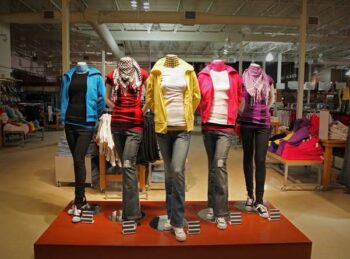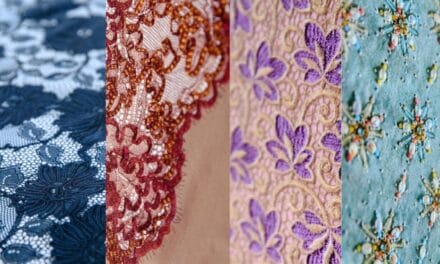Market Overview:
The Women’s Apparel market is a dynamic and vibrant sector within the global fashion industry, encompassing a diverse range of clothing and accessories designed to cater to the style preferences, lifestyles, and needs of women of all ages and demographics. From casual wear and activewear to formal attire and haute couture, women’s apparel reflects evolving fashion trends, cultural influences, and consumer preferences, making it a reflection of personal expression and identity. With the increasing influence of social media, e-commerce platforms, and sustainability concerns, the Women’s Apparel market experiences continuous evolution, innovation, and disruption, shaping the future of fashion. The global women’s apparel market is forecast to expand at a CAGR of 4.9 % and thereby increase from a value of US$4,263.0 Mn in 2024, to US$5,958.6 Mn by the end of 2031 as per report published by Persistence Market Research.
Market Growth Factors:
Several key factors contribute to the growth and dynamics of the Women’s Apparel market:
• Shifting Fashion Trends and Consumer Preferences: Fashion trends are constantly evolving, driven by factors such as cultural influences, celebrity endorsements, and social media platforms. Women’s apparel brands and designers adapt to changing trends, offering collections that resonate with consumer preferences for style, comfort, and versatility. From athleisure and streetwear to sustainable fashion and vintage-inspired designs, women seek clothing that reflects their individuality, values, and lifestyle choices, driving demand for diverse and trend-forward apparel options.
• Rise of E-Commerce and Digital Retailing: The proliferation of e-commerce platforms and digital retailing channels revolutionizes the way women shop for apparel, offering convenience, choice, and personalized experiences. Online retailers and fashion marketplaces provide a vast selection of women’s clothing, accessories, and footwear, accessible anytime, anywhere, through desktop and mobile devices. The convenience of online shopping, coupled with features such as virtual try-on, size guides, and user reviews, enhances the shopping experience and drives the growth of the digital Women’s Apparel market.
• Influence of Social Media and Influencer Marketing: Social media platforms, such as Instagram, Facebook, and TikTok, wield significant influence over women’s fashion preferences and purchasing decisions. Fashion influencers, bloggers, and celebrities showcase the latest trends, styles, and outfit inspirations to millions of followers, driving engagement and brand awareness for apparel brands and retailers. Collaborations between fashion brands and social media influencers amplify brand reach, foster consumer trust, and drive product discovery and sales, shaping the digital landscape of the Women’s Apparel market.
• Emphasis on Sustainability and Ethical Fashion: Increasing awareness of environmental issues and ethical concerns within the fashion industry drives demand for sustainable and ethically produced women’s apparel. Consumers seek transparency, traceability, and eco-friendly practices in the supply chain, favoring brands that prioritize ethical sourcing, fair labor practices, and environmentally responsible manufacturing processes. Sustainable fashion initiatives, such as recycled materials, organic fabrics, and circular fashion models, resonate with eco-conscious consumers, driving market demand for ethical and environmentally friendly apparel options.
Women’s Apparel Market: Fashioning Trends with Style and Substance
The women’s apparel market is a vibrant and ever-evolving landscape, influenced by changing fashion trends, consumer preferences, and societal norms. With women’s clothing representing a diverse array of styles, occasions, and lifestyles, the market offers numerous opportunities for brands and retailers to innovate, differentiate, and capture market share in this dynamic industry.
One significant opportunity within the women’s apparel market lies in meeting the growing demand for inclusive and diverse clothing options that cater to women of all shapes, sizes, and backgrounds. With increasing emphasis on body positivity, diversity, and representation in the fashion industry, there is rising demand for inclusive sizing, extended size ranges, and adaptive clothing that accommodate a wide range of body types and physical abilities. Manufacturers and retailers can seize this opportunity by offering a diverse range of clothing options, including plus-size, petite, tall, and maternity sizes, as well as incorporating adaptive features such as adjustable waistbands, easy closures, and sensory-friendly fabrics for individuals with disabilities or sensory sensitivities. By embracing inclusivity and diversity in their product offerings and marketing strategies, brands can appeal to a broader customer base and foster a more inclusive and empowering shopping experience for women of all ages, sizes, and backgrounds.
Moreover, the women’s apparel market benefits from increasing consumer interest in sustainable and ethical fashion practices, driven by concerns about environmental impact, labor conditions, and supply chain transparency. With growing awareness of the social and environmental consequences of fast fashion, there is rising demand for clothing brands that prioritize ethical sourcing, eco-friendly materials, and transparent manufacturing processes. Manufacturers and retailers can capitalize on this trend by adopting sustainable practices such as using organic, recycled, or biodegradable fabrics, reducing waste through responsible production methods, and supporting fair labor practices and artisan craftsmanship. Additionally, brands can educate consumers about the importance of sustainable fashion and empower them to make informed purchasing decisions by providing transparent information about their supply chain, manufacturing practices, and environmental initiatives. By embracing sustainability and transparency in their operations, brands can build trust, loyalty, and brand equity among environmentally conscious consumers and contribute to positive change in the fashion industry.
Furthermore, the women’s apparel market presents opportunities for innovation in design, technology, and customization to meet the evolving needs and preferences of modern consumers. With women seeking clothing that not only looks stylish but also offers functionality, versatility, and comfort for their busy and active lifestyles, there is growing demand for innovative fabrics, performance features, and personalized shopping experiences. Manufacturers and retailers can seize this opportunity by incorporating advanced materials such as moisture-wicking fabrics, wrinkle-resistant finishes, and UV protection into their clothing lines, as well as offering innovative design elements such as convertible styles, reversible garments, and modular pieces that can be worn in multiple ways. Additionally, brands can leverage technology such as virtual try-on, augmented reality, and artificial intelligence to enhance the online shopping experience and provide personalized recommendations based on individual style preferences, body measurements, and past purchase history. By embracing innovation and technology in their product development and marketing strategies, brands can stay ahead of the curve and appeal to tech-savvy consumers seeking fashion-forward and functional clothing solutions.
Market Trends:
One prevailing trend in the women’s apparel market is the growing demand for sustainable and ethically produced clothing. With increasing awareness of environmental issues and labor practices in the fashion industry, consumers are seeking apparel brands that prioritize sustainability, transparency, and social responsibility. Sustainable fashion initiatives such as eco-friendly materials, ethical sourcing, and fair labor practices are gaining traction, influencing purchasing decisions and shaping brand loyalty among environmentally conscious consumers.
Another notable trend is the rise of digitalization and e-commerce in the women’s apparel market. Online shopping platforms, social media influencers, and digital marketing campaigns play a significant role in shaping consumer preferences, driving fashion trends, and facilitating seamless shopping experiences. Apparel brands are leveraging technology to enhance virtual try-on tools, personalized recommendations, and interactive shopping experiences, catering to the preferences and shopping behaviors of digital-savvy consumers.
Market Challenges:
Despite the positive trends, the women’s apparel market faces challenges related to sustainability, sizing inclusivity, and fast fashion culture. Balancing the demand for fast, affordable fashion with sustainability goals and ethical considerations presents challenges for apparel brands and retailers. Addressing issues such as textile waste, chemical pollution, and labor exploitation requires investment in sustainable materials, supply chain transparency, and circular economy initiatives to minimize environmental impact and promote responsible consumption habits.
Furthermore, achieving size inclusivity and diversity in women’s apparel remains a challenge for the industry. Historically, standard sizing conventions and limited size ranges have excluded many body types and sizes from mainstream fashion offerings. Apparel brands are responding to consumer demand for size diversity and inclusivity by expanding size ranges, offering petite and plus-size options, and embracing body-positive messaging and marketing campaigns to celebrate diverse beauty ideals and promote inclusivity in fashion.
Latest Developments:
Recent developments in the women’s apparel market focus on innovation, personalization, and digital transformation to meet the evolving needs and preferences of consumers. Apparel brands are investing in sustainable materials such as organic cotton, recycled polyester, and innovative textiles derived from renewable sources to reduce environmental impact and promote eco-friendly fashion choices. Circular fashion initiatives such as clothing rental, resale platforms, and garment recycling programs offer consumers sustainable alternatives to traditional ownership models, contributing to a more circular and sustainable apparel economy.
Moreover, there is a growing emphasis on personalization and customization in women’s apparel offerings. Brands are leveraging data analytics, artificial intelligence, and 3D body scanning technologies to offer personalized fit recommendations, made-to-measure options, and customizable design features that allow consumers to create unique and tailored garments that fit their individual style preferences and body shapes. Personalized shopping experiences enhance customer satisfaction, loyalty, and brand engagement, driving growth and differentiation in the competitive women’s apparel market.





















